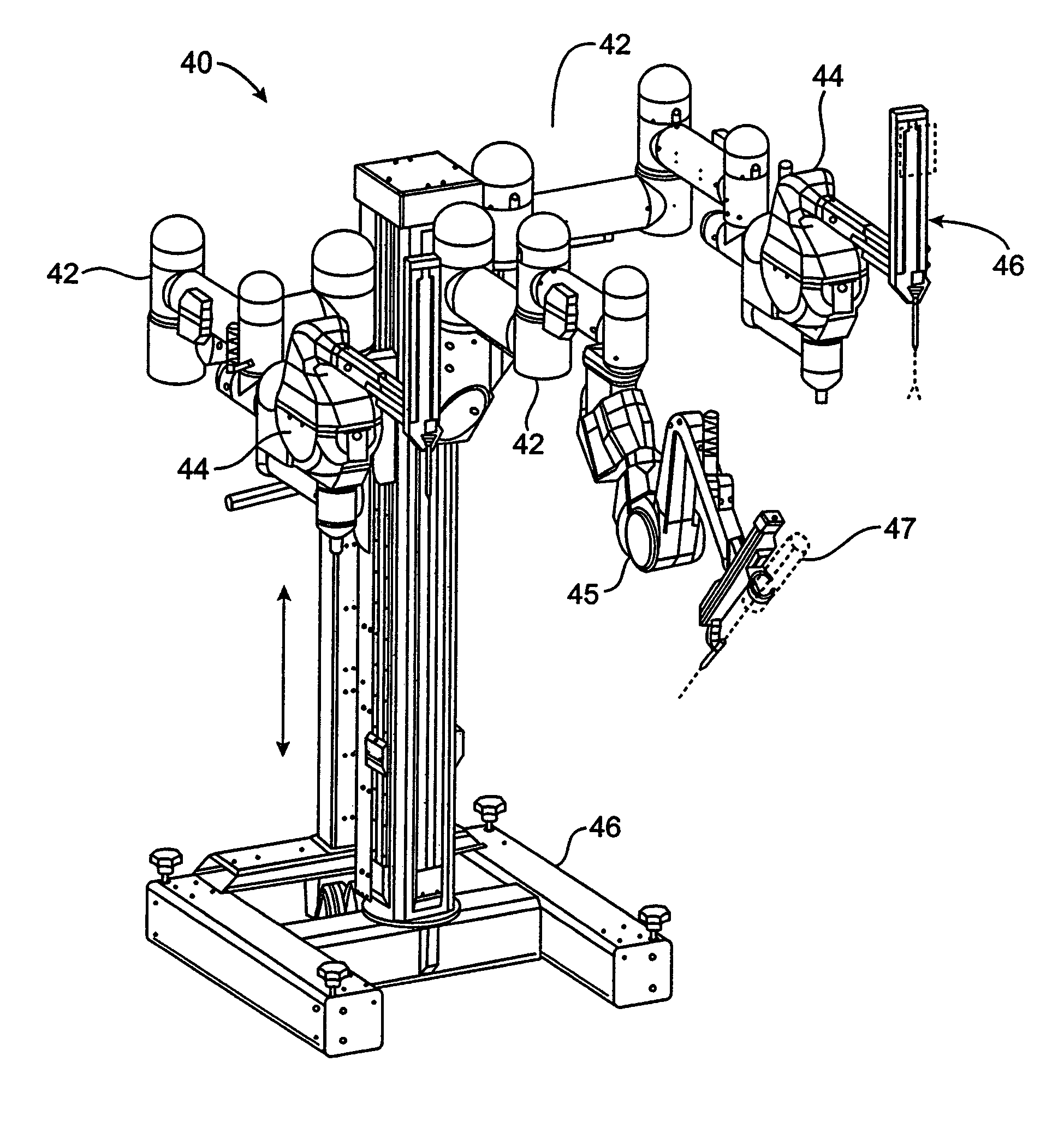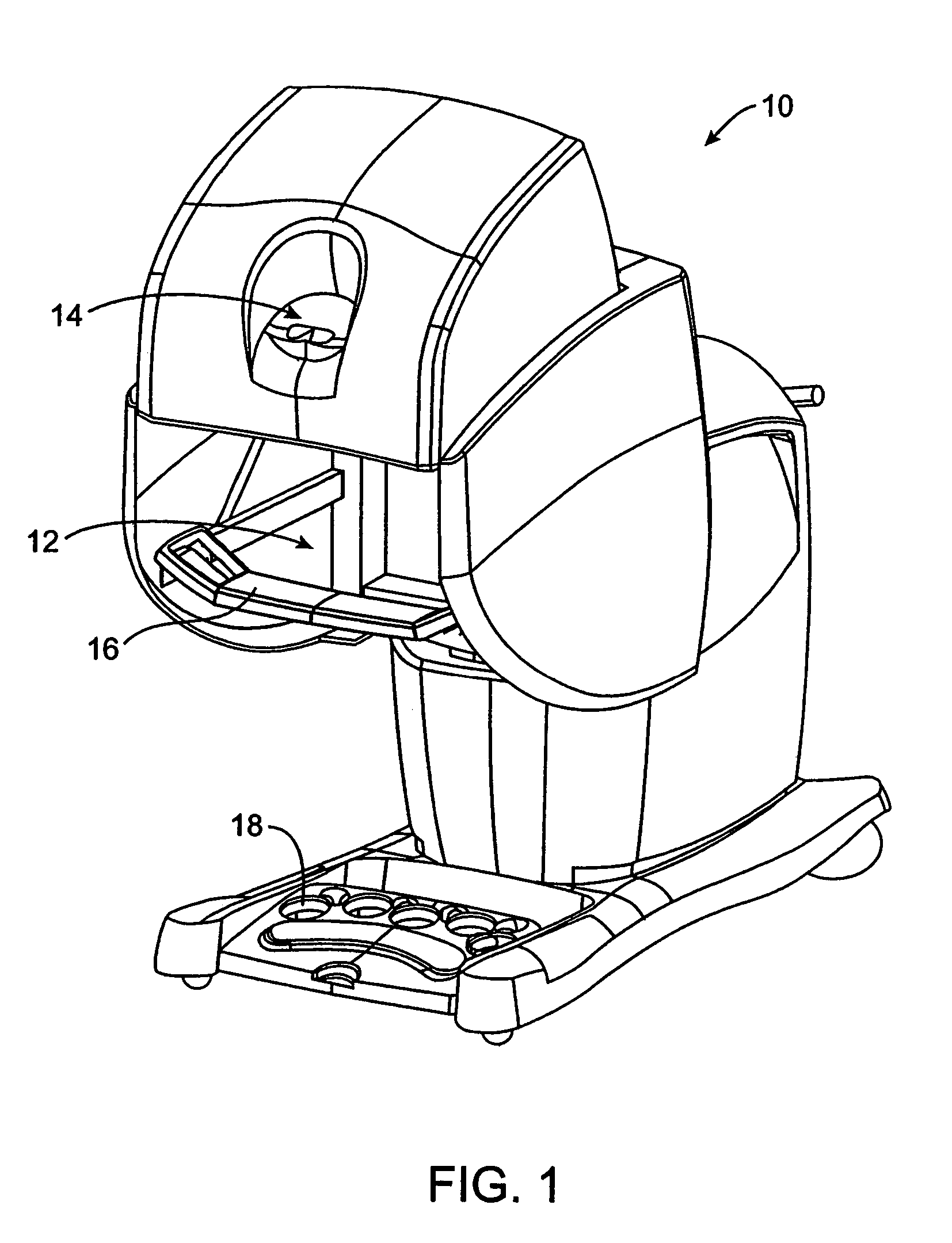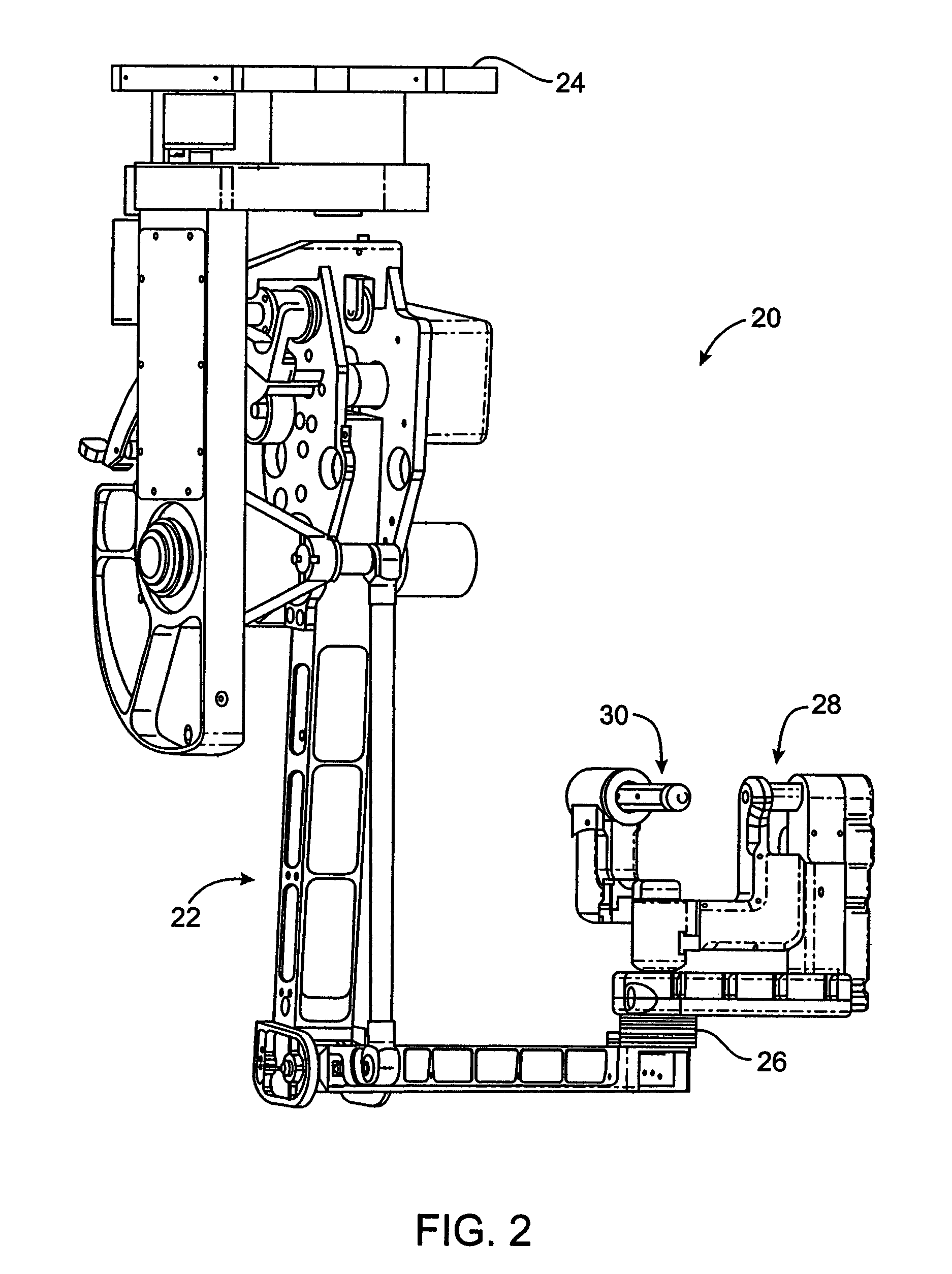Grip strength with tactile feedback for robotic surgery
a robotic surgery and tactile feedback technology, applied in the field of medical devices, systems and methods, can solve the problems of limited application of these promising techniques, minimally invasive surgical instruments and techniques, and insufficient flexibility of tool placement for surgeons in open surgery, so as to enhance slave grip strength and enhance telepresence
- Summary
- Abstract
- Description
- Claims
- Application Information
AI Technical Summary
Benefits of technology
Problems solved by technology
Method used
Image
Examples
Embodiment Construction
[0042]This application is related to the following patents and patent applications, the full disclosures of which are incorporated herein by reference: PCT International Application No. PCT / US98 / 19508, entitled “Robotic Apparatus”, filed on Sep. 18, 1998, U.S. application Ser. No. 09 / 418,726, entitled “Surgical Robotic Tools, Data Architecture, and Use”, filed on Dec. 6, 1999; U.S. application Ser. No. 09 / 398,507, entitled “Master Having Redundant Degrees of Freedom”, filed Sep. 17, 1999, U.S. application Ser. No. 09 / 457,406, entitled “Image Shifting Apparatus & Method for a Telerobotic System”, filed on Dec. 7, 1999; U.S. application Ser. No. 09 / 378,173 entitled “Stereo Imaging System for Use in Telerobotic Systems”, filed on Aug. 20, 1999; and U.S. Pat. No. 5,808,665, entitled “Endoscopic Surgical Instrument and Method for Use”, issued on Sep. 15, 1998; the full disclosures of which are incorporated herein by reference.
[0043]The present invention provides improved robotic and surg...
PUM
 Login to View More
Login to View More Abstract
Description
Claims
Application Information
 Login to View More
Login to View More - R&D
- Intellectual Property
- Life Sciences
- Materials
- Tech Scout
- Unparalleled Data Quality
- Higher Quality Content
- 60% Fewer Hallucinations
Browse by: Latest US Patents, China's latest patents, Technical Efficacy Thesaurus, Application Domain, Technology Topic, Popular Technical Reports.
© 2025 PatSnap. All rights reserved.Legal|Privacy policy|Modern Slavery Act Transparency Statement|Sitemap|About US| Contact US: help@patsnap.com



